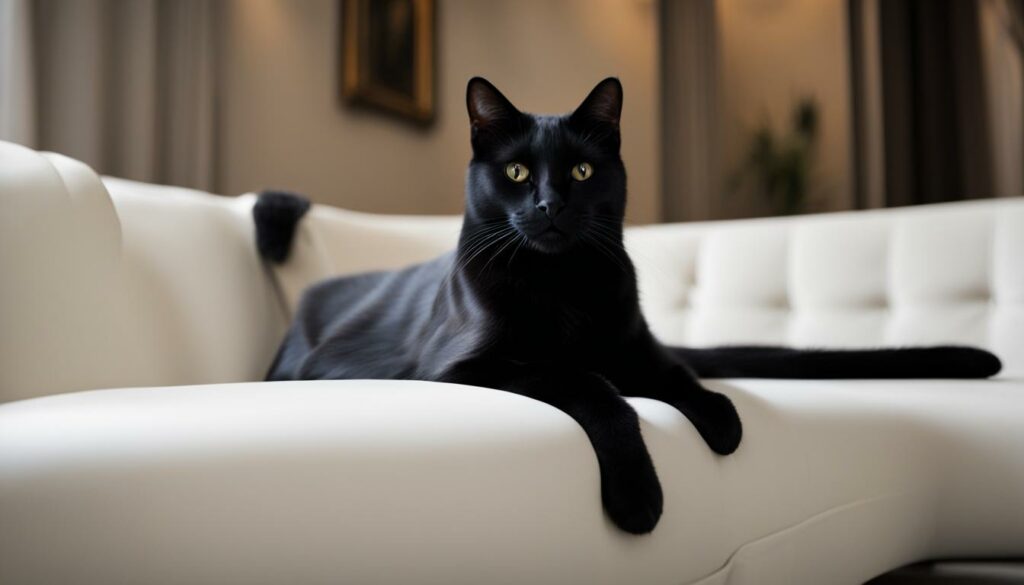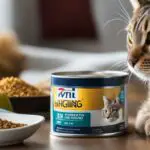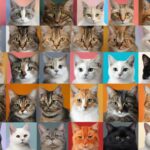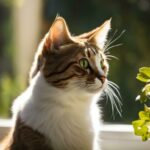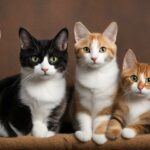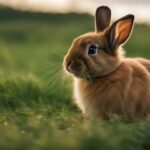Cats that don’t shed are a dream come true for pet lovers who want to enjoy the companionship of a feline friend without the hassle of dealing with excessive fur. These low shedding and hypoallergenic cats are the perfect choice for those with allergies or those who simply prefer a fur-free home.
In this guide, I will take you through the different breeds of cats that don’t shed and provide valuable tips for maintaining a fur-free home. Whether you’re searching for non-shedding cats, low shedding cats, or cats that don’t require much grooming, I’ve got you covered.
By the end of this article, you’ll have a better understanding of which low maintenance cat breeds are best suited for your lifestyle and preferences. Say goodbye to shedding woes and say hello to a fur-free home!
Key Takeaways:
- Cats that don’t shed are a great option for a fur-free home.
- Low shedding and hypoallergenic breeds produce fewer allergens.
- Hairless breeds like the Sphynx require special care and grooming.
- Breeds like the Siberian, Bengal, Cornish Rex, and Siamese are known for their low-shedding qualities.
- Choosing the right low maintenance cat breed can provide companionship without the hassle of excessive shedding.
Understanding Cat Allergies and Shedding
When it comes to cat allergies, many people assume that it’s the fur that triggers their symptoms. However, it’s not the fur itself that causes allergic reactions but rather the allergens present in a cat’s skin, dander, and saliva. One specific protein called Fel d 1 is the primary culprit behind these allergies. It is transferred to a cat’s fur through grooming, which then can be spread to the environment, leading to allergic reactions in susceptible individuals.
Exposure to cat allergens can result in various symptoms such as sneezing, coughing, itchy eyes, and skin rashes. These symptoms occur when a person’s immune system recognizes the allergens as harmful substances and responds by triggering an allergic reaction. The level of shedding in cats can also impact allergies, as the allergens can become airborne when cats shed their fur.
“Cat allergies are caused by the allergens present in a cat’s skin, dander, and saliva, not the fur itself.”
For individuals with allergies, hypoallergenic cats are a popular choice as they produce fewer allergens compared to other cats. These breeds are often recommended for allergy sufferers who still want to enjoy the companionship of a feline friend. While hypoallergenic cats may shed less and produce fewer allergens, it’s important to note that no cat breed is completely non-allergenic. However, by understanding the relationship between cat allergies and shedding, individuals can make informed decisions when selecting a cat that best suits their needs.
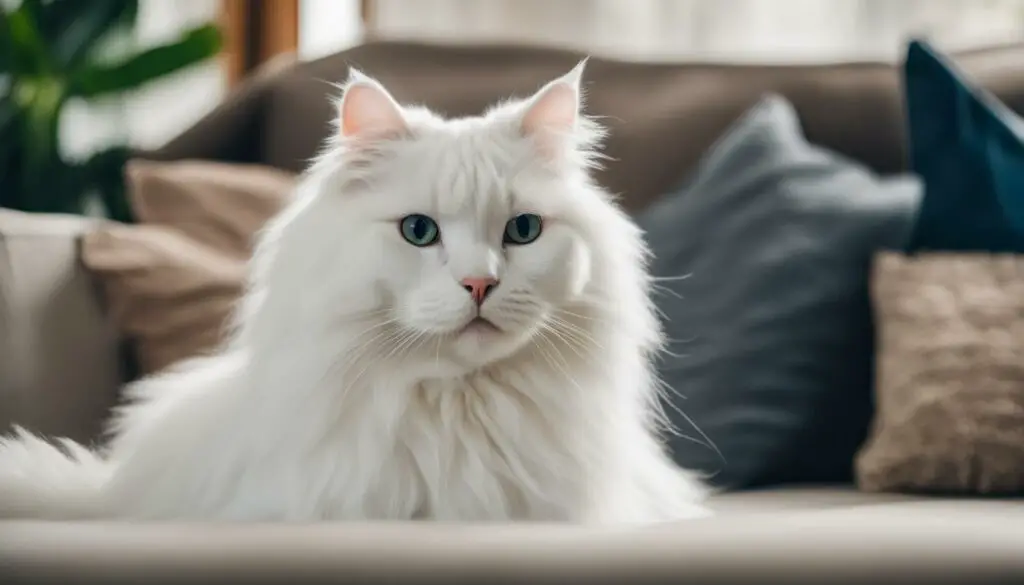
| Allergens | Main Source |
|---|---|
| Fel d 1 | Cat’s skin, dander, and saliva |
| Allergic Reactions | Sneezing, coughing, itchy eyes, skin rashes |
| Shedding | Allergens can become airborne |
The Relationship Between Cat Allergies and Shedding
It’s important to understand that cat allergies are not solely caused by shedding. Shedding simply plays a role in dispersing allergens in the environment. Therefore, even cats that don’t shed as much may still produce allergens that can trigger allergic reactions in sensitive individuals. By focusing on hypoallergenic breeds and implementing proper allergy management techniques, individuals can significantly reduce their exposure to allergens and enjoy the company of a cat without suffering from excessive allergic reactions.
The Sphynx: The Hairless Breed
The Sphynx is a unique and distinctive hairless breed of cat. While they may not have fur, it’s important to note that they can still produce allergens in their dander and saliva. However, many individuals with cat allergies find that they have fewer allergic reactions to Sphynx cats compared to other breeds. These cats are often considered hypoallergenic and are a popular choice for those seeking a low-shedding companion.
Due to their lack of fur, Sphynx cats have special grooming needs. Regular bathing is necessary to keep their skin clean and healthy. Additionally, their exposed skin requires protection from the sun, dirt, and temperature changes, which means they have a more robust grooming routine compared to other cats. It’s essential to follow a specialized diet to ensure their nutritional needs are met.
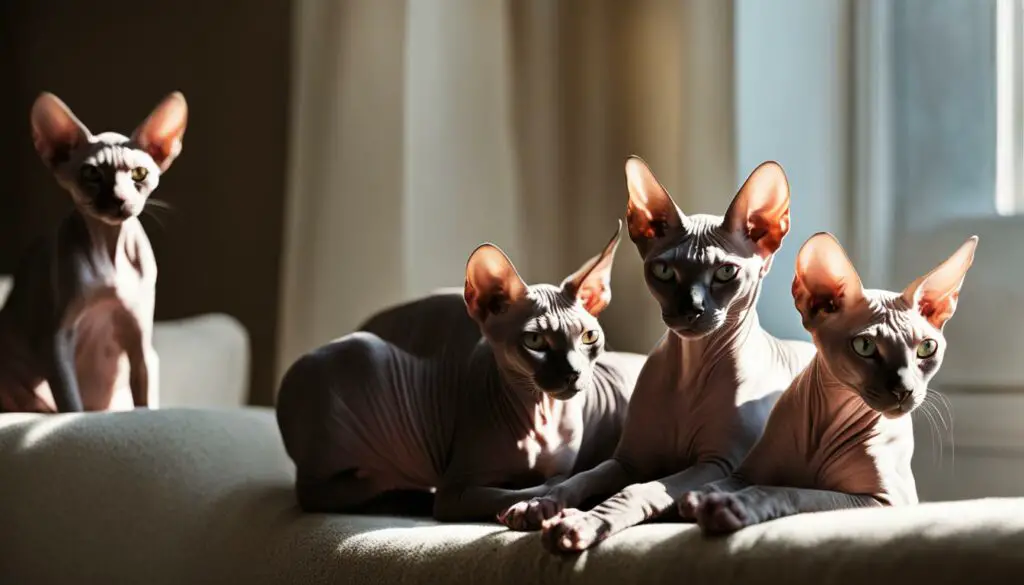
The Sphynx cat’s unique appearance and personality make them a sought-after breed. They are known for being affectionate, social, and enjoying the company of their human companions. Despite their hairless exterior, these cats have a warm and loving nature. Their lack of fur also means that they don’t leave behind as much cat hair around the house, making them a great choice for those who prefer a fur-free home.
Grooming Routine and Specialized Diet for Sphynx Cats
Grooming a Sphynx cat requires regular bathing to keep their skin clean and free from excess oils. It’s important to use mild, hypoallergenic shampoos specifically designed for cats to avoid skin irritation. Regular ear cleaning is also important to prevent wax buildup, as Sphynx cats have larger ears that can trap debris more easily.
As for their diet, Sphynx cats require a specialized diet that meets their unique nutritional needs. It’s important to consult with a veterinarian to ensure that they receive the right balance of nutrients to promote healthy skin and overall well-being. Additionally, providing them with plenty of fresh water is essential to prevent dehydration, as their lack of fur means that they lose moisture more easily through their skin.
Overall, the Sphynx is a fascinating breed of cat that offers a hypoallergenic and low-shedding option for cat lovers. Their unique appearance, affectionate nature, and special grooming routine make them a popular choice for those seeking a hairless companion.
Siberian Cats: Low-Shedding and Hypoallergenic
When it comes to low-shedding and hypoallergenic cat breeds, Siberian cats are a popular choice. Despite their long and dense coat, Siberians shed less than other breeds, making them suitable for those seeking a fur-free home. These cats are known for their hypoallergenic qualities, as they produce fewer allergens than many other cat breeds.
To keep their coat in optimal condition, Siberian cats require regular grooming, including weekly brushing. This helps to remove loose fur and prevent matting. Despite their grooming needs, Siberians are considered a low-maintenance breed overall.
While Siberians are known for their low shedding, it’s important to note that no cat is completely non-shedding. However, Siberians’ shedding is minimal and can be easily managed with regular brushing. Their beautiful coat, coupled with their large size and playful nature, make Siberians a great choice for cat lovers looking for a low-shedding and hypoallergenic companion.
| Key Characteristics | Details |
|---|---|
| Hypoallergenic | Produces fewer allergens, making them suitable for allergy sufferers. |
| Low-Shedding | Sheds less compared to other cat breeds. |
| Grooming Needs | Requires regular brushing to maintain coat health and prevent matting. |
| Playful and Social | Siberians are known for their friendly and outgoing nature. |
Siberian cats are a great choice for those who want a low-shedding and hypoallergenic pet. Their beautiful coat and friendly personality make them a wonderful addition to any home.
Bengal Cats: Low Maintenance and Full of Personality
If you’re looking for a cat breed that combines minimal shedding with an active, vocal personality, then Bengal cats are an excellent choice. These stunning felines have a distinctive coat that sheds less frequently than other breeds, making them a popular option for those who prefer a low-maintenance pet.
Bengal cats are known for their active nature and need plenty of mental and physical stimulation. They love to play, climb, and explore their surroundings, so providing them with adequate toys, scratching posts, and vertical spaces is essential for their well-being. Additionally, Bengals are highly vocal and enjoy communicating with their owners through various chirps, trills, and meows.
One of the advantages of owning a Bengal cat is their low-maintenance grooming routine. Their short, dense coat requires minimal brushing to keep it in top condition. Bengals are also known for their self-grooming habits, which help reduce the amount of loose hair in the environment. This makes them a great option for individuals or families who prefer a cat that sheds less and requires less grooming.
| Key Traits of Bengal Cats | Key Benefits for Owners |
|---|---|
| Active and playful nature | Provides entertainment and companionship |
| Distinctive coat with minimal shedding | Less cleaning and maintenance in the home |
| Vocal and communicative | Interactive and engaging companions |
| Low-maintenance grooming | Requires less time and effort for grooming |
Overall, Bengal cats are a wonderful option for individuals or families who desire a low-maintenance pet that sheds less and has a captivating personality. With their striking appearance, active nature, and vocal tendencies, Bengals provide both companionship and entertainment to their owners.
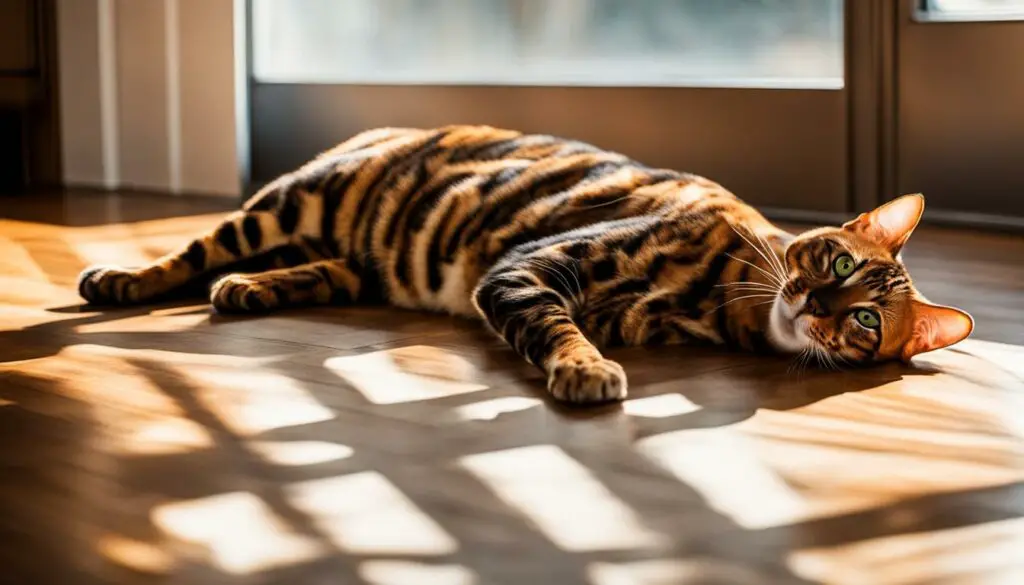
The Beauty of Bengal Cats
“Bengal cats truly captivate with their distinctive coat and wild appearance. Their low maintenance grooming and vocal nature make them a unique addition to any cat-loving family.” – Cat Enthusiast
The Cornish Rex: Soft, Curly, and Low-Shedding
When it comes to low-shedding cat breeds, the Cornish Rex stands out with its unique coat. These cats have a soft and curly coat consisting of only down hair, which is less likely to shed compared to other breeds. The absence of outer guard hairs and reduced shedding make the Cornish Rex a great choice for those seeking a low-maintenance pet.
In addition to their low-shedding qualities, Cornish Rex cats are highly active and playful. They have a natural curiosity and love to explore their surroundings, making them a delightful companion for any cat lover. Their high energy levels also mean they require regular playtime and mental stimulation to keep them happy and engaged.
Grooming the Cornish Rex is relatively easy due to their minimal shedding. Occasional brushing with a soft brush or wiping them down with a damp cloth is usually sufficient to maintain their coat. It’s important to note that their delicate skin requires special care, so it’s best to avoid harsh grooming techniques or products that could irritate their skin.
Distinctive Features of the Cornish Rex
- Oversized ears: One of the most noticeable features of the Cornish Rex is their large ears. These ears add to their unique appearance and give them a distinctive charm.
- Active and agile: Cornish Rex cats are known for their athleticism and agility. They love climbing, jumping, and chasing toys, providing endless entertainment for their owners.
- Elegant and sleek: With their slender bodies and fine-boned structure, Cornish Rex cats have a graceful and elegant appearance.
The Cornish Rex is a wonderful choice for anyone looking for a low-shedding and active cat. Their unique coat, combined with their playful and affectionate nature, makes them an excellent addition to any fur-free home.
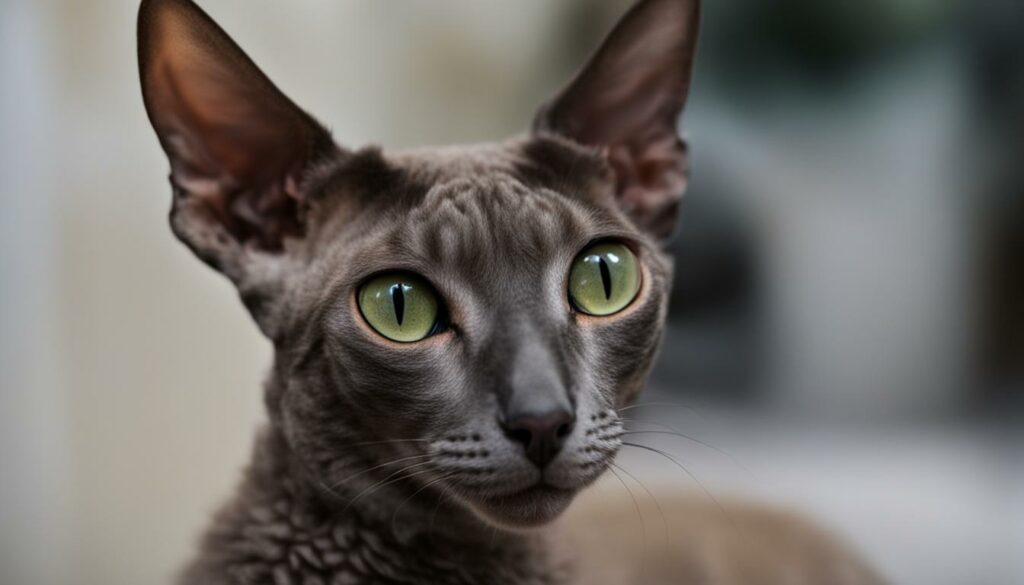
The Siamese: Low-Shedding and Distinctive
The Siamese cat is a popular breed known for its low-shedding coat and distinctive characteristics. With their unique vocalization, striking blue eyes, and elegant markings, Siamese cats stand out among other feline companions. Their beautiful coat requires minimal grooming, making them a great choice for those who prefer a low-maintenance pet.
“Siamese cats are highly social and affectionate, making them a great choice for cat lovers seeking a low-maintenance companion.”
Siamese cats have a sleek and short coat that produces less dander, reducing the risk of triggering allergies in sensitive individuals. Their unique vocalization, often described as a raspy yowl, adds to their character, making them excellent communicators. Siamese cats are known for their playful nature and enjoy interactive toys and games that stimulate their active minds.
One of the most recognizable features of the Siamese breed is their striking blue eyes. These captivating eyes, along with their distinctive markings, add to their charm and beauty. Siamese cats come in a variety of colors and patterns, including seal point, blue point, chocolate point, and lilac point.

Siamese Cat Characteristics:
- Low-shedding coat, requiring minimal grooming
- Unique vocalization that is a mix of rasp and yowl
- Distinctive markings and striking blue eyes
- Social and affectionate nature
- Playful and active, enjoying interactive toys and games
In summary, the Siamese cat is a low-shedding breed with a distinctive coat and unique vocalization. Their striking blue eyes and elegant markings make them visually captivating. With their low-maintenance grooming needs and affectionate nature, Siamese cats are an excellent choice for cat lovers seeking a feline companion with style and personality.
The Bombay: A Sleek, Low-Shedding Panther
If you’re looking for a cat with a sleek black coat and minimal shedding, the Bombay is the perfect choice. These feline beauties have a panther-like appearance that is sure to turn heads. Their short, glossy fur requires minimal grooming, making them a low-maintenance breed.
Not only are Bombays known for their stunning looks, but they also have a friendly and affectionate nature. They enjoy being around people and are often described as attention seekers. Bombays are highly adaptable and can easily adjust to new environments.
“The Bombay is a wonderful companion. Their sleek coat and affectionate nature make them a joy to have in the family.” – Cat Lover Magazine
One unique aspect of the Bombay breed is their trainability. These cats can be leash-trained, allowing you to take them for walks and adventures outside of the house. This adds an extra level of interaction and excitement to your relationship with your feline friend.
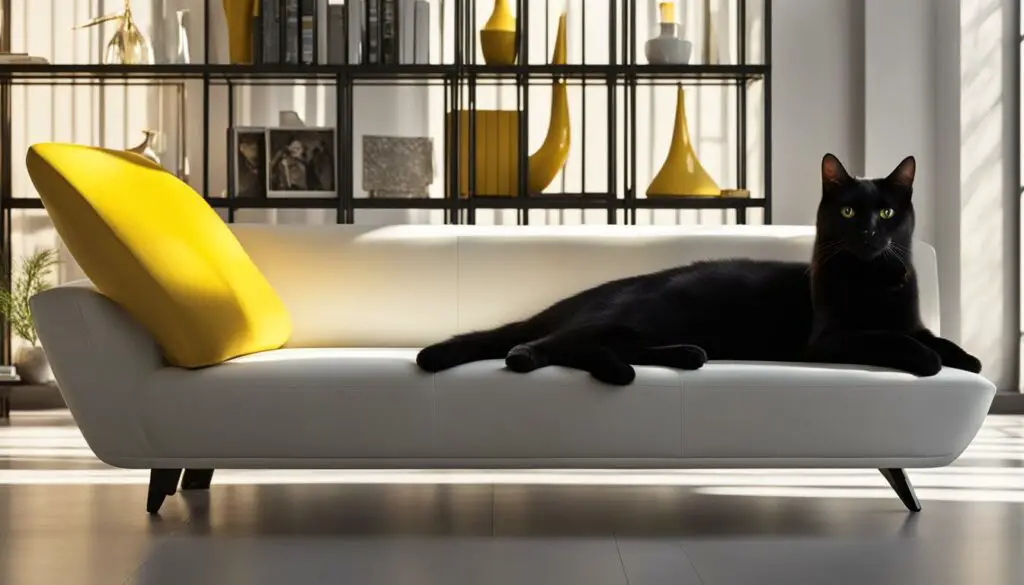
| Characteristics | Details |
|---|---|
| Coat | Short, sleek, and black |
| Shedding | Minimal |
| Temperament | Friendly, affectionate, and social |
| Trainability | Leash-training possible |
Whether you’re an experienced cat owner or a first-timer, the Bombay is a fantastic choice. Their low-shedding coat, striking appearance, and affectionate nature make them a wonderful addition to any home. So, if you’re looking for a sleek and low-maintenance companion, consider welcoming a Bombay into your life.
Summary of Low-Shedding Cat Breeds
If you’re a cat enthusiast looking for a low-shedding breed that will keep your home fur-free and require minimal maintenance, there are several options to consider. Low-shedding cat breeds, also known as hypoallergenic cats, are a great choice for those with allergies or those who prefer a cleaner living space. These breeds produce less dander and shed less, making them a better option for those with sensitivities.
| Breed | Coat Type | Grooming Needs | Personality |
|---|---|---|---|
| Russian Blue | Short, dense coat | Minimal grooming needed | Gentle, playful, and affectionate |
| Siberian | Semi-long, dense coat | Regular brushing | Intelligent, social, and energetic |
| Sphynx | Hairless | Regular bathing and skincare routine | Curious, affectionate, and outgoing |
| Siamese | Short, sleek coat | Minimal grooming needed | Vocal, social, and intelligent |
| Bengal | Short, dense coat | Minimal grooming needed | Active, playful, and adventurous |
Each of these breeds has its own unique qualities and characteristics. The Russian Blue, for example, has a short and dense coat that requires minimal grooming. They are known for their gentle and playful nature, making them great companions. The Siberian cat has a semi-long and dense coat that requires regular brushing to keep it in good condition. They are intelligent, social, and energetic cats that thrive in an interactive environment.
The Sphynx, on the other hand, is a hairless breed that requires regular bathing and a tailored skincare routine. Despite their lack of fur, they are known for their curious, affectionate, and outgoing personality. The Siamese cat has a short and sleek coat that is easy to maintain. They are vocal and social cats that love to engage with their owners. Lastly, the Bengal cat has a short and dense coat that is low-shedding and requires minimal grooming. They are active, playful, and adventurous cats that need plenty of stimulation.
“Low-shedding cat breeds offer a great solution for cat enthusiasts who want a fur-free home and low maintenance care. These breeds not only provide relief for allergies but also offer various personalities and temperaments to suit different lifestyles. Whether you prefer a cat with a short coat like the Russian Blue or a wild-looking breed like the Bengal, there is a low-shedding breed out there for you.” – Cat Enthusiast
Understanding Non-Shedding Dog Breeds
When it comes to finding a dog that doesn’t shed, there are several options to consider. Non-shedding dog breeds are a popular choice for those who have allergies or simply prefer a fur-free home. Mixed breeds like goldendoodles, labradoodles, schnoodles, cockapoos, and bernadoodles are known for their low-shedding qualities, thanks to their poodle parentage. These breeds are often considered hypoallergenic and can be a good option for allergy sufferers.
Goldendoodles, labradoodles, schnoodles, cockapoos, and bernadoodles are all mixed breeds that combine the traits and characteristics of their poodle parentage with other breeds. This mix creates dogs that have minimal shedding, making them suitable for those who want a low-maintenance pet. These breeds often have curly or wavy coats that require regular grooming to keep them looking their best.
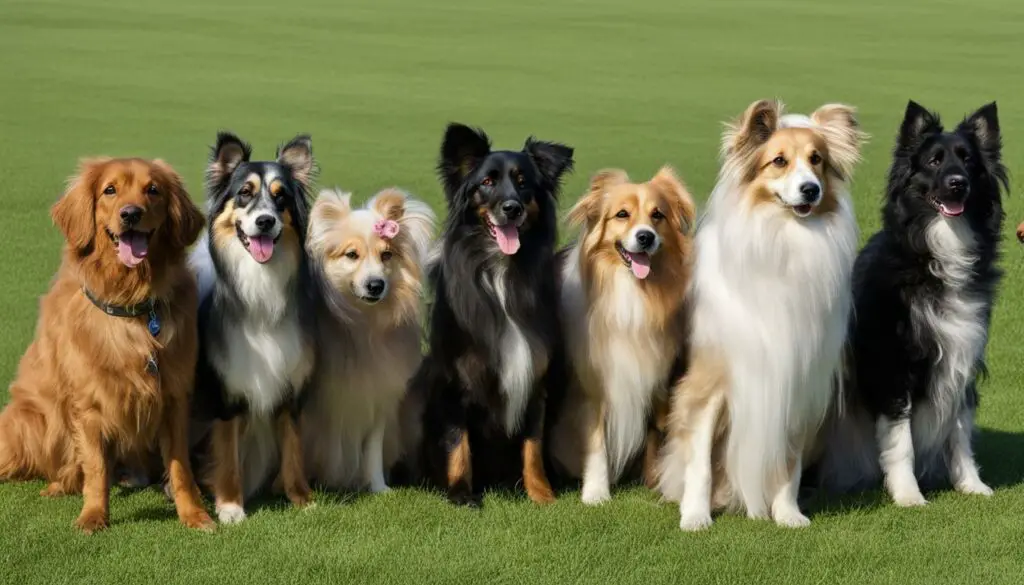
Comparing Non-Shedding Dog Breeds:
| Breed | Coat Type | Grooming Needs | Temperament |
|---|---|---|---|
| Goldendoodle | Curly or wavy | Regular grooming | Friendly and outgoing |
| Labradoodle | Straight or wavy | Regular grooming | Intelligent and energetic |
| Schnoodle | Curly or wiry | Regular grooming | Sociable and playful |
| Cockapoo | Straight or wavy | Regular grooming | Affectionate and adaptable |
| Bernadoodle | Curly or wavy | Regular grooming | Gentle and loyal |
These non-shedding mixed breeds are not only great for individuals with allergies but also for those who want an energetic and friendly companion. While their grooming needs may require regular attention, the minimal shedding makes them easier to maintain compared to other breeds. Their unique mix of poodle and other breeds also gives them a distinct appearance and personality.
If you’re considering a dog that doesn’t shed, these mixed breeds can be a fantastic choice. Whether you’re looking for a playful and outgoing companion or a gentle and loyal friend, there’s a non-shedding dog breed that can match your lifestyle and preferences.
Low-Shedding Dog Breeds That Have It All
When it comes to low-shedding dog breeds, there are several options that not only offer a fur-free home but also have unique qualities and personalities. These breeds require regular grooming to keep their coats in good condition but provide a great companionship to their owners.
Bichon Frise
The Bichon Frise is a small, fluffy dog breed known for its low-shedding coat and friendly demeanor. They are highly sociable and make excellent family pets. Bichon Frises are also intelligent and easy to train, making them a popular choice for first-time dog owners.
Miniature Schnauzer
The Miniature Schnauzer is a small but sturdy breed with a low-shedding coat. They are known for their distinctive beard and bushy eyebrows, which add to their charming appearance. Miniature Schnauzers are intelligent, alert, and make great watchdogs. They are also highly adaptable and can thrive in both urban and rural settings.
Lagotto Romagnolo
The Lagotto Romagnolo is a medium-sized breed originally bred as a water retriever in Italy. They have a curly, hypoallergenic coat that requires regular grooming to prevent matting. Lagotto Romagnolos are intelligent, energetic, and excel in various activities such as agility and scent work. They are also known for their friendly and affectionate nature.
Soft-coated Wheaten Terrier
The Soft-coated Wheaten Terrier is a medium-sized breed with a silky, low-shedding coat. They are known for their playful and friendly disposition, making them great companions for families. Soft-coated Wheaten Terriers are active and require regular exercise to keep them mentally and physically stimulated.
Portuguese Water Dog
The Portuguese Water Dog is a medium to a large-sized breed with a curly, low-shedding coat. They were originally bred as working dogs for fishermen in Portugal and are highly skilled swimmers. Portuguese Water Dogs are intelligent, loyal, and have a friendly nature. They thrive in an active household and enjoy engaging in various water sports.
| Breed | Size | Coat Type | Temperament | Exercise Needs |
|---|---|---|---|---|
| Bichon Frise | Small | Fluffy, low-shedding | Friendly, sociable | Moderate exercise |
| Miniature Schnauzer | Small | Wirehaired, low-shedding | Alert, intelligent | Moderate exercise |
| Lagotto Romagnolo | Medium | Curly, low-shedding | Energetic, friendly | Moderate exercise |
| Soft-coated Wheaten Terrier | Medium | Silky, low-shedding | Playful, friendly | Moderate exercise |
| Portuguese Water Dog | Medium to large | Curly, low-shedding | Loyal, friendly | High exercise |
These low-shedding dog breeds offer the perfect combination of a fur-free home and wonderful companionship. Whether you’re looking for a small and sociable breed like the Bichon Frise or a larger and active breed like the Portuguese Water Dog, there is a low-shedding breed to suit every preference and lifestyle.
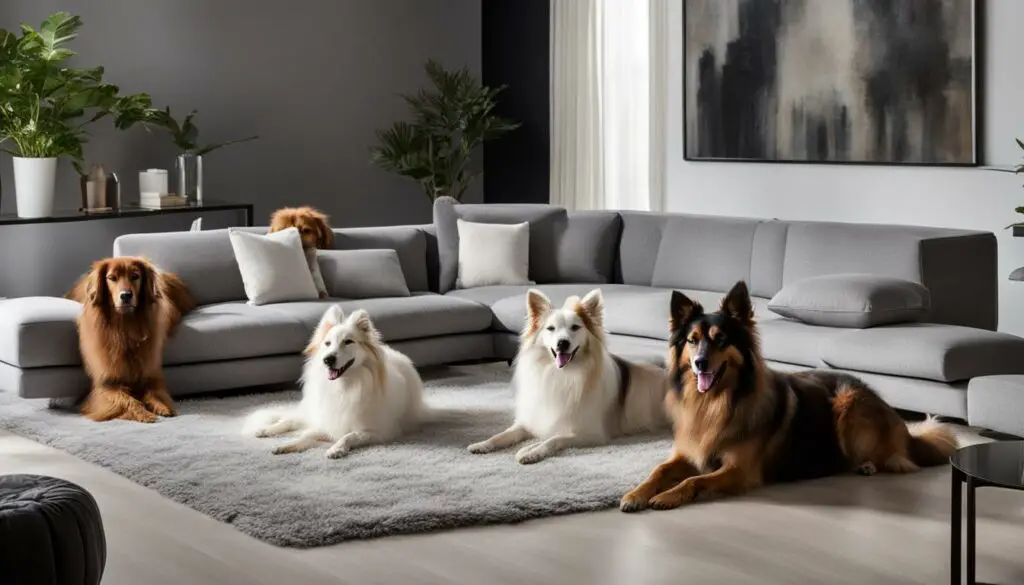
Cats That Don’t Shed: Five Popular Breeds
When it comes to cats that don’t shed, there are several popular breeds that stand out for their low-shedding qualities. These breeds are great options for those who prefer minimal grooming and want to maintain a fur-free home. Let’s explore five of the most popular low-shedding cat breeds:
Russian Blue
The Russian Blue is known for its beautiful bluish-gray coat that requires minimal grooming. This breed sheds less compared to other cats, making it a good choice for individuals with allergies or those looking for a low-maintenance cat. Russian Blues are also known for their intelligence, playfulness, and affectionate nature, making them wonderful companions.
Siberian
The Siberian cat is not only low-shedding but also hypoallergenic, making it an excellent choice for individuals with allergies. Despite their long and dense fur, Siberians produce fewer allergens compared to other cat breeds. They have a gentle and friendly disposition, making them a popular choice for families. Regular grooming and weekly brushing are necessary to keep their coat in good condition.
Sphynx
The Sphynx is a hairless breed that is often associated with being hypoallergenic. While they don’t have fur to shed, Sphynx cats can still produce allergens through their dander and saliva. They require regular bathing and a specialized diet to keep their skin healthy. Although their appearance may be unconventional, Sphynx cats are known for their affectionate and social nature.
Siamese
The Siamese cat is another low-shedding breed that is recognized for its distinctive coat and striking blue eyes. Siamese cats shed less compared to other breeds, making them a good option for those looking for a cat that requires minimal grooming. They are also known for their unique vocalization and sociable nature, making them excellent companions.
Bengal
Bengal cats have a unique and eye-catching coat that sheds less frequently compared to other breeds. These cats are known for their active nature and love for playtime. Bengal cats can be a great choice for individuals who prefer minimal grooming and want a cat that is full of personality. They are also known for being highly affectionate and social.
When considering a cat that doesn’t shed, it’s important to remember that no cat is completely non-shedding. However, these popular breeds shed less hair compared to others, making them a suitable choice for those who prefer a fur-free home and low maintenance grooming routines.
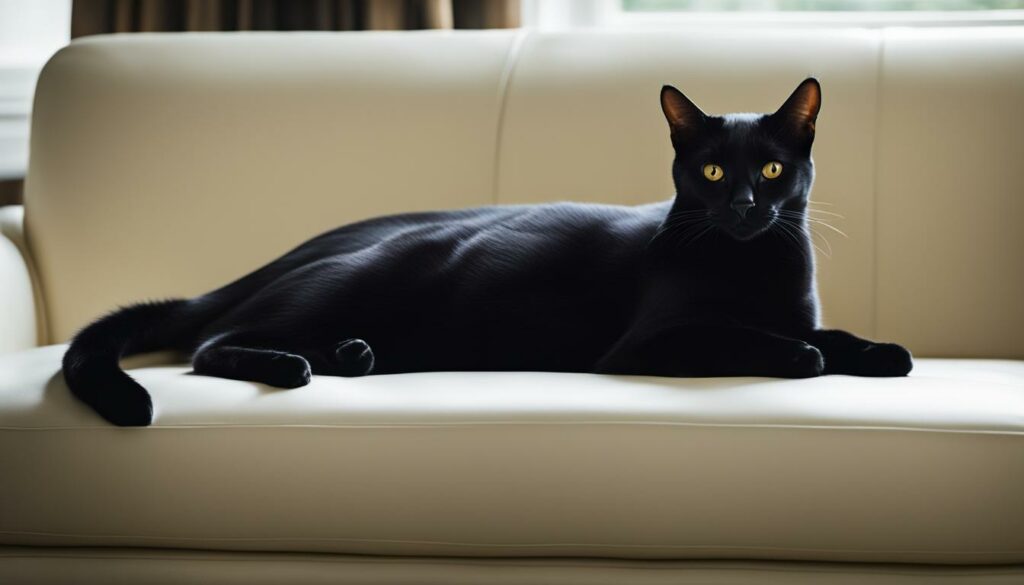
| Breed | Coat Characteristics | Temperament |
|---|---|---|
| Russian Blue | Short, dense, and bluish-gray coat | Intelligent, playful, and affectionate |
| Siberian | Long and dense double coat | Gentle, friendly, and sociable |
| Sphynx | Hairless with wrinkled skin | Curious, affectionate, and social |
| Siamese | Short coat with color-point pattern | Vocal, sociable, and intelligent |
| Bengal | Distinctive coat with leopard-like pattern | Active, playful, and affectionate |
Dogs That Don’t Shed: Five Popular Breeds
If you’re looking for a dog that doesn’t shed, there are several popular breeds to consider. These breeds have low-shedding coats, making them a great choice for those who prefer a fur-free home. Let’s take a closer look at five of these breeds:
Bichon Frise
The Bichon Frise is a small, fluffy dog with a hypoallergenic coat that doesn’t shed much. They have a playful and friendly personality, making them great companions for families. Bichon Frises require regular grooming to keep their coat in good condition.
Miniature Schnauzer
Miniature Schnauzers are known for their distinctive beards and eyebrows. They have a wiry, hypoallergenic coat that doesn’t shed much. These dogs are alert, intelligent, and make excellent family pets. Regular grooming is necessary to maintain their coat.
Lagotto Romagnolo
The Lagotto Romagnolo is a water-retrieving dog with a curly, hypoallergenic coat. They were originally bred as truffle hunters in Italy and have a friendly, affectionate nature. Lagotto Romagnolos require regular grooming to prevent matting.
Soft-coated Wheaten Terrier
Soft-coated Wheaten Terriers have a soft, wavy coat that doesn’t shed excessively. They are energetic, playful, and make great family pets. Regular grooming, including brushing and occasional trimming, is necessary to maintain their coat.
Portuguese Water Dog
The Portuguese Water Dog has a curly, hypoallergenic coat that doesn’t shed much. They were originally bred to assist fishermen and are known for their intelligence and trainability. Portuguese Water Dogs require regular grooming to prevent matting.
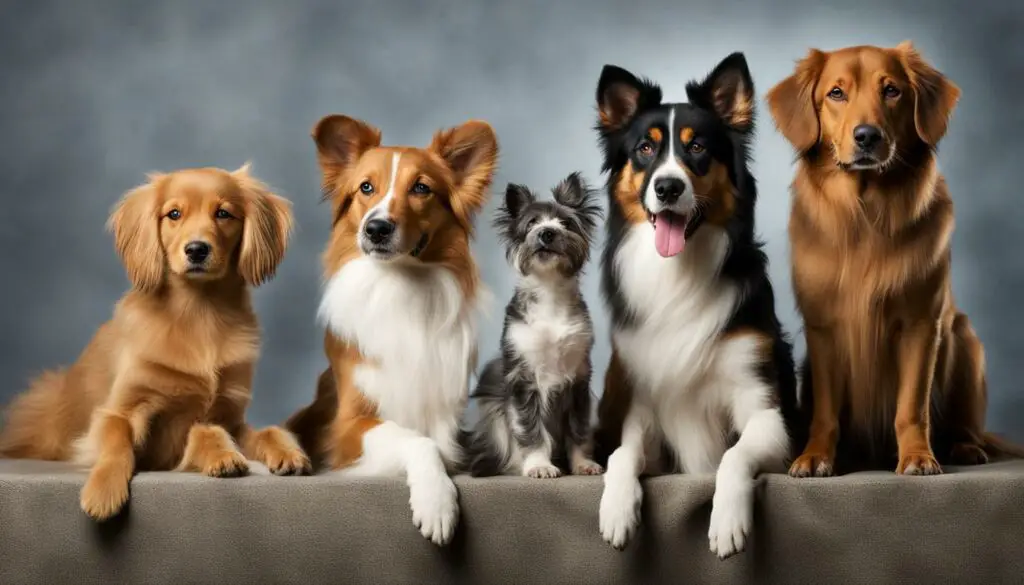
These five breeds are just a few examples of dogs that don’t shed much. They offer the benefits of a fur-free home while providing companionship, loyalty, and love. Remember, every dog is unique, so it’s important to consider their individual needs and temperament when choosing the perfect breed for your family.
The Benefits of Mixed Breeds
When it comes to choosing a pet, mixed breeds offer a host of benefits that make them an excellent choice for many pet owners. These unique combinations of different breeds bring together the best qualities of each, resulting in a pet that is both lovable and healthy. Mixed breeds often have a lower risk of inherited genetic diseases and can enjoy a longer lifespan compared to purebred counterparts.
One of the significant advantages of mixed breeds is the wide variety of options available. Whether you’re looking for a small lap dog or an active companion, there is a mixed breed that fits every lifestyle and preference. Additionally, mixed breeds can often be found in shelters and animal rescues, providing an opportunity to give a loving home to a pet in need.
“Mixed breeds often have a lower risk of inherited genetic diseases and can enjoy a longer lifespan compared to purebred counterparts.”
The health benefits of mixed breeds extend beyond their genetic makeup. These dogs tend to have robust immune systems, making them less prone to allergies and respiratory issues often associated with specific purebred breeds. Their diverse heritage offers a unique blend of traits that can include intelligence, athleticism, and adaptability.
By choosing a mixed breed, you not only gain a loyal and loving companion but also contribute to reducing the problem of overpopulation in animal shelters. Remember, when adopting a pet, you’re providing a second chance at a happy life, and mixed breeds offer a fantastic opportunity to do so.
| Benefits of Mixed Breeds | |
|---|---|
| Lower risk of inherited genetic diseases | Longer lifespan compared to purebred dogs |
| Wide variety of options to suit different lifestyles | Opportunity to give a loving home to a shelter pet |
| Reduced incidence of allergies and respiratory issues | Diverse blend of traits including intelligence and adaptability |
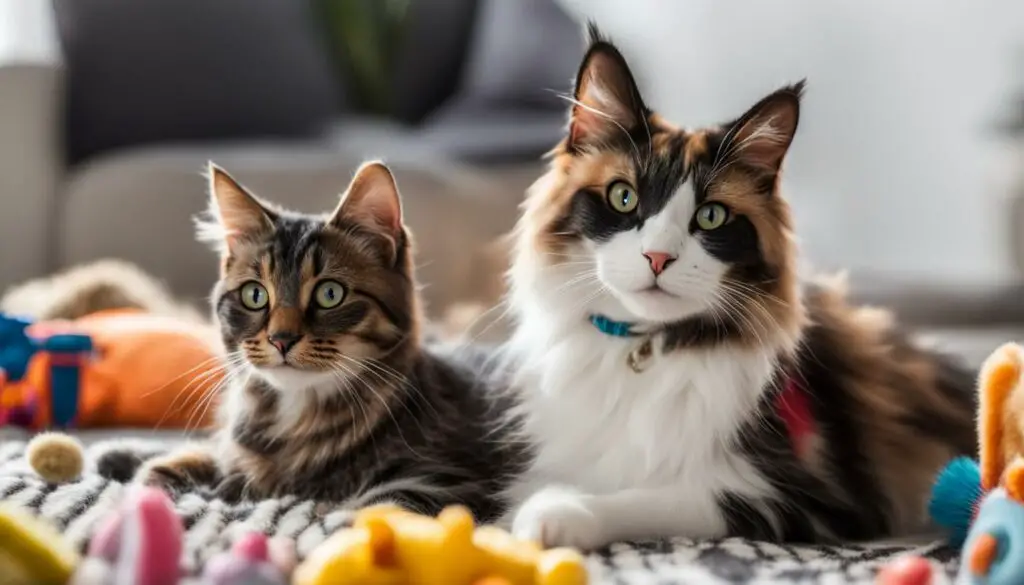
Choosing the Perfect Pet for Your Family
When it comes to choosing a pet for your family, there are several factors to consider to ensure a perfect fit. Whether you’re adopting from a shelter or looking for a specific breed, it’s essential to think about the pet’s shedding, allergies, and how their needs align with your lifestyle.
Pet Adoption: Adopting a pet from a shelter or rescue organization is a wonderful option. Not only are you providing a loving home for an animal in need, but shelters also often have a variety of low shedding pets available. Check with local shelters and rescue groups to see if they have any hypoallergenic or low shedding breeds that would be suitable for your family.
Suitable Breed: Consider the specific breed characteristics and temperament when choosing a pet. Low shedding pets, such as certain cat breeds or non-shedding dog breeds, are excellent choices for those who prefer minimal grooming and want to maintain a fur-free home. Additionally, hypoallergenic breeds, which produce fewer allergens, can be ideal for individuals with allergies or sensitivities.
| Breed | Shedding Level | Temperament |
|---|---|---|
| Russian Blue | Low shedding | Calm, affectionate |
| Siberian | Low shedding | Playful, sociable |
| Sphynx | No shedding | Energetic, friendly |
| Siamese | Low shedding | Intelligent, vocal |
| Bengal | Low shedding | Active, affectionate |
Allergies: If you or a family member has allergies, it’s crucial to choose a pet that is hypoallergenic or produces fewer allergens. Hypoallergenic breeds like the Russian Blue or Sphynx cats, or non-shedding dog breeds like the Bichon Frise or Portuguese Water Dog, can be a better option for allergy sufferers. Be sure to spend time with the prospective pet before adoption to ensure that no allergic reactions occur.
Lifestyle: Consider your family’s lifestyle and the amount of time and energy you can dedicate to a pet. Some breeds may require more exercise and mental stimulation than others. For example, active dog breeds like the Portuguese Water Dog or Bengal cat may thrive in households with plenty of space and opportunities for play, while other breeds may be more suited to a calmer environment.
By taking into account factors such as pet adoption, suitable breed, allergies, and lifestyle, you can make an informed decision when choosing the perfect pet for your family. Whether you opt for a low shedding cat or a non-shedding dog, providing a loving home and meeting their specific needs will result in a rewarding companionship for years to come.
Conclusion
In conclusion, if you’re looking to create a fur-free home, there are plenty of options available. Both low shedding cats and non-shedding dogs can provide you with the companionship you desire without the hassle of excessive shedding.
Hypoallergenic breeds are particularly beneficial for those with allergies, as they produce fewer allergens and can help alleviate allergic reactions. These breeds are a great choice for individuals who want to enjoy the company of a pet without the discomfort of allergies.
Additionally, low shedding pets offer a low maintenance option for pet owners. With less fur to clean up and groom, these breeds can save you time and effort while still providing the love and affection you seek from a furry companion.
Ultimately, choosing the right breed for your family’s lifestyle and preferences is key. Whether you opt for a low shedding cat or a non-shedding dog, there are numerous hypoallergenic and low maintenance breeds to consider. By selecting the perfect pet, you can create a harmonious environment in your fur-free home.
FAQ
Are there any cats that don’t shed?
While no cat is completely non-shedding, there are breeds that shed less than others. Some popular low-shedding cat breeds include the Russian Blue, Siberian, Sphynx, Siamese, and Bengal.
Do low-shedding cats produce fewer allergens?
Yes, low-shedding cats are often considered hypoallergenic and produce fewer allergens than other cats. These breeds can be a better option for allergy sufferers.
What is the difference between cat fur and cat dander?
Cat fur refers to the hair that covers a cat’s body, while cat dander refers to the tiny particles of skin that cats shed. It is the allergens in the dander that can cause allergic reactions.
Can hairless cats still cause allergies?
Yes, even though hairless cats like the Sphynx don’t have fur, they can still produce allergens in their dander and saliva. It’s important to note that the absence of fur doesn’t guarantee a completely hypoallergenic cat.
Which cat breed requires the least grooming?
The Cornish Rex has a unique coat consisting of only an undercoat, known as down hair. This type of hair is less likely to shed and requires less grooming than other breeds.
Are Siamese cats low-shedding?
Yes, Siamese cats are known for their low-shedding coat. They have a distinctive coat and markings, and their shedding is minimal compared to other breeds.
Are there any dogs that don’t shed?
While no dog is completely non-shedding, there are breeds that shed less than others. Some popular low-shedding dog breeds include the Bichon Frise, Miniature Schnauzer, Lagotto Romagnolo, Soft-coated Wheaten Terrier, and Portuguese Water Dog.
Do mixed breeds have less shedding?
Mixed breeds like goldendoodles, labradoodles, schnoodles, cockapoos, and bernadoodles are known for their low-shedding qualities, thanks to their poodle parentage. These breeds can be considered hypoallergenic and are often a good option for allergy sufferers.
Can mixed breed dogs have health benefits?
Yes, mixed breed dogs often have the health benefits of mixed genetics, resulting in fewer inherited genetic diseases and a longer lifespan.
What factors should I consider when choosing a pet?
When choosing a pet, it’s important to consider factors such as shedding, allergies, and lifestyle. Low-shedding pets and hypoallergenic breeds are suitable options for those with allergies or a preference for minimal grooming. Considering your family’s lifestyle and preferences can help you find the perfect breed that matches your needs and provides a loving companion.

